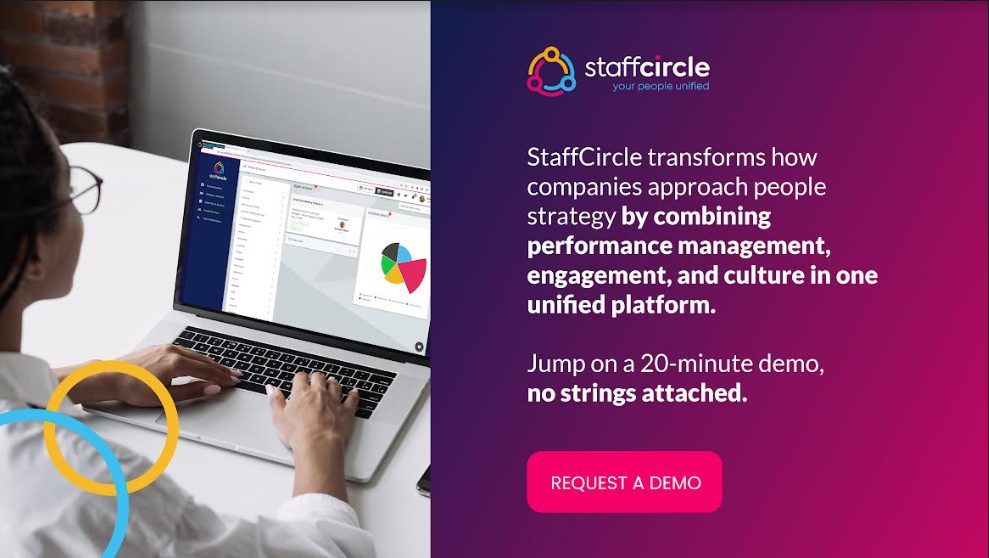Plan, conduct and improve results with this compact guide to performance management for employees
Performance management for employees offers business leaders an interconnected set of tools to measure and improve the effectiveness of the workforce. As individuals develop skills, reward mechanisms help drive the overall performance of the company.
With such a wide range of tools and resources, it can be easy to get bogged down in data and overwhelmed by the potential courses of action available. This compact guide outlines how to avoid common pitfalls so the performance management process can be customized to achieve the desired outcomes.
Understanding How to Develop a Successful Employee Performance Management Plan
The best way to predict the future is to create it.
Peter Drucker, Management Consultant and Author
Successful performance management begins with a plan. Such a plan gives managers and employees a comprehensive overview of goals and expectations and how these are to be achieved.
There are ten core factors to consider when putting together an employee performance management plan. These are:
- Meet with the employee to outline the objectives of the performance management plan. To lay the foundations for an effective plan, managers need to discuss it with the employee. Strengths and weaknesses can be discussed so that the former are enhanced and the latter resolved.
- Conduct peer reviews to bring additional context to the plan. Speaking to an employee’s colleagues and team leader gives HR administrators and managers greater insight.
- Agree upon an action plan with achievable goals. A good performance management plan for employees requires clear objectives. Make sure these are based around observable outcomes which can be accurately measured.
- Set the metrics for success. Goals should be broken down into metrics so that employees have a clear understanding of expectations.
- Establish the right tools to track these metrics. Once the metrics have been established, performance management tools can be brought into play. These allow managers and employees to track performance in real-time and adjust behaviour as and when required.
- Schedule continual feedback sessions. Engagement and alignment require continual conversations. Regular feedback sessions should be an integral aspect of an employee performance management plan.
- Provide the necessary training and resources. Successful businesses require successful employees who understand the importance of skill stacks. Include any training and mentoring an employee might need as part of their plan.
- Use rewards and recognition programs to motivate the employee. Congratulating employees for a job well done shouldn’t be restricted to one2one meetings. Institute recognition programs so that positive behaviours can be encouraged throughout the workforce.
- Review the outcome of the performance management plan with the employee. Once the plan has run its course, engage with the employee for their perspectives on how things went.
- Evaluate the effectiveness of the plan. Understanding what went right- and what went wrong – allows managers to improve future employee performance management plans.
Key Concepts for an Effective Employee Performance Management Process
Once the plan is in place it’s time to put it into action. In order for the employee performance management process to run smoothly, there are some core concepts to consider. These concepts help ensure performance is managed consistently and marshals all the resources necessary to maximize positive results.
Leverage Data and Analytics Throughout the Performance Management Process
Performance management software allows for comprehensive tracking of metrics. Data analytics and reporting tools mean that managers and HR leaders can gain a birds’ eye view of an employee’s progress.
From this data, potential obstacles to success can be spotted early on and corrective action taken. Managers and employees alike should take advantage of performance management dashboards to ensure progress towards goals is aligned consistently. Furthermore, business leaders can use this data to gain broader insights into the organization’s overall strategy.

Use Coaching and Training to Continually Develop Employees
Metrics and data tracking in a software to manage employees allows managers to identify potential issues before they cause catastrophe. Coaching and training offer the means for employees to course correct and get back on track for success. At the same time, encouraging the constant development of skills improves performance from A-players, honing existing talents while introducing new ones.
Such training and development can take on a range of forms, including:
- Formal qualifications (for instance degrees)
- Online/digital training courses
- Shadowing more experienced colleagues
- Coaching and mentoring
- Hands-on training
- Peer-led training and resource sharing
Access to a wealth of training resources can be facilitated via a software to manage employees, for instance via the company’s intranet. As new resources become available, employees can be made aware through the software’s news feed.
Strike a Balance Between Intrinsic and Extrinsic Rewards
Businesses typically reward great performance with extrinsic rewards such as bonuses and other perks. But these rewards fall short when it comes to boosting employee motivation and satisfaction. Instead, employees require rewards that hit them on a deeper and more meaningful level.
Josh Bersin’s article discussing the cultivation of innovation at work highlights the importance of intrinsic rewards:
“In survey results following an innovation contest … the most popular answer from the respondents (51%) was that their motivating factor was the opportunity to easily publish an idea. In other words, they just needed a creative outlet, and the contest provided just that. And while 20% of respondents cited participation for the chance to win one of the prizes, more individuals acknowledged the following three as popular contributing factors: opportunity for company visibility (31%), the intellectual challenge of the task (29%), and the knowledge that it is important for the company (29%).”
When planning and conducting performance management for employees, make sure their goals and objectives feature rewards that encourage a desire to innovate and excel.
Best Practices of an Employee Performance Management Framework
Additional frameworks can be nested within the overarching performance management plan. Performance management for employees has a variety of constituent elements which can be taken advantage of by adhering to best practices. By customizing an employee performance management framework according to the needs of the individual it becomes an effective means to develop talent and achieve results.
Use Goals to Encourage Independent Thinking and Problem Solving
The nature of employee performance goals can vary wildly depending on the individual circumstances. Likewise, these goals can be affected by company resources. In some instances, the “cheaper, faster, better” rubric outlined by Dick Grote in his book How to Be Good at Performance Appraisals can be deployed. This approach asks how expenses can be reduced and less time spent while still improving quality.
Fundamentally, goals should be set with a view to marshalling available resources to encourage employees to think independently. As such, goals should be established which go beyond an employee’s job description and marry personal interests with professional growth. By tapping into and fostering skills that best suit their interests, goals become vehicles driving strengths that define their personal traits.
A versatile software to manage employees also allows managers to set goals and monitor the development of soft skills. By using key performance indicators (KPIs), employees can work towards improving a wide range of skills that will help their overall performance improve.
Such skills include:
- Communication skills. A range of communications skills can be developed by embedding them into a performance management plan. Scheduling public speaking and presentations can improve an employee’s verbal communication skills. Encouraging employees to conduct meetings will help them to better negotiate and become good listeners.
- Critical thinking. Developing an employee’s ability to think critically allows them to bring new and innovative solutions to the organization. Goals can be used to encourage adaptability, enhance critical observation skills and troubleshoot in a way which reflects thinking outside the box.
- Teamwork. Goals can be used to drive an individual’s capacity for a range of soft skills which improve teamwork. Emotional intelligence, empathy, intercultural competence and networking are just a few elements of teamwork which can be enhanced with the right approach to goals. Encouraging employees to be team players helps them form alliances with colleagues and ultimately strengthens the core of the company.
- Leadership. Not all employees have the ability to make the transition into leadership roles. But goals can help identify those who are while providing the motivation to improve leadership skills. Such employees can be encouraged to manage difficult situations and resolve issues among their team. They can also be used to guide them into coaching and mentorship roles to demonstrate their aptitude for managing people.
Connect Employees With Multi-channel Communications
The business community is currently experiencing an unprecedented revolution in digital communications. And with millennials forming an increasingly large share of the workforce, adapting to an era of social media and instant notifications is essential.
Josh Bersin’s article discussing how to go from feedback to action highlights some of the complexities involved when it comes to interpreting data and taking appropriate action:
“First you need to get the feedback data in a place you can find it, and this is a problem you can solve with tools. Next, you need a set of dashboards, meetings, or events that force leaders to share what people said. Third, you need to give managers tools to help them decide what to do, then fourth you need to encourage (or force) managers to talk about their action plan. And then of course feed this back and see what happened.”
By using a network of digital communications tools, these data points and decisions can be communicated throughout the organization in an instant. Traditional communications such as email no longer suffice, so a multi-channel communications platform that incorporates mobile phones via an app ensures all employees are connected.
Given the increase in remote and hybrid workforces, such platforms help make sure messaging is consistent and timely. At the same time, customizable dashboards along with company news feeds and social intranets mean that employees can be kept abreast of new development instantaneously.
Performance Management Employee Engagement Tactics
If you hire people just because they can do a job, they’ll work for your money. But if you hire people who believe what you believe, they’ll work for you with blood and sweat and tears.
Simon Sinek, inspirational speaker
There is a close link between great employee performance and engagement. Engaged employees are better motivated to complete their objectives and can deliver the level of focus required to excel in their field. Engaged employees also work harder at a higher level of quality, while the net effect for businesses is lower absenteeism and increased revenue.
Understanding and Improving Employee Well-being
The association between physical and mental well-being and performance has long been understood on an intuitive as well as academic level. In order to get the most out of employees, business leaders need to adopt performance management employee engagement strategies that recognize emotional and physical challenges.
With these challenges identified, managers can work with employees and HR administrators to help deliver higher standards of well-being.
Fostering Relationships Between Managers and Employees With Regular Conversations
Ongoing conversations are crucial regardless of the overall goals of a given strategy of performance management for employees. Whether dealing with under-performing employees or encouraging star players to expand their talent stack, regular conversations boost engagement and strengthen relationships.
Managers and team leaders can foster more meaningful relationships by:
- Engaging the team members at every available opportunity. From brief ad hoc conversations to regularly scheduled meetings, the more opportunities there are to touch base the better.
- Conduct informal and authentic conversations. Conversing with employees in a more casual manner when appropriate builds trust and demonstrates leaders respect employees.
- Encourage cross-team and cross-department conversations. HR leaders and managers can use HR admin tools to build an overview of organizational skills. Use this map to help connect individuals with colleagues from other departments who might be able to bring fresh ideas to the table.
- Start the process early! When onboarding new hires, managers and HR leaders should start the regular conversations from their first day in the office. Welcome emails from team members also help to foster relationships with colleagues from day one.
Checking the Pulse of the Organization With Employee Sentiment Surveys
Keeping track of employee engagement throughout an organization can be tricky, particularly for large businesses composed of multiple teams and departments. Through using an employee sentiment analysis system via software to manage employees’ performance, business leaders can identify sentiment and take appropriate action.
Employees can respond to sentiment analysis to express a range of emotions from sad to ecstatic, which managers can observe in easy to understand graphs and diagrams. These responses can be broken down to individual, team, department and company-wide metrics so that business leaders can adopt a proportional and targeted response.
By identifying employees who are lagging behind, measures can be taken to address any issues affecting their performance. Subsequently, engagement is improved across the board and processes which improve sentiment can be replicated in the future.



